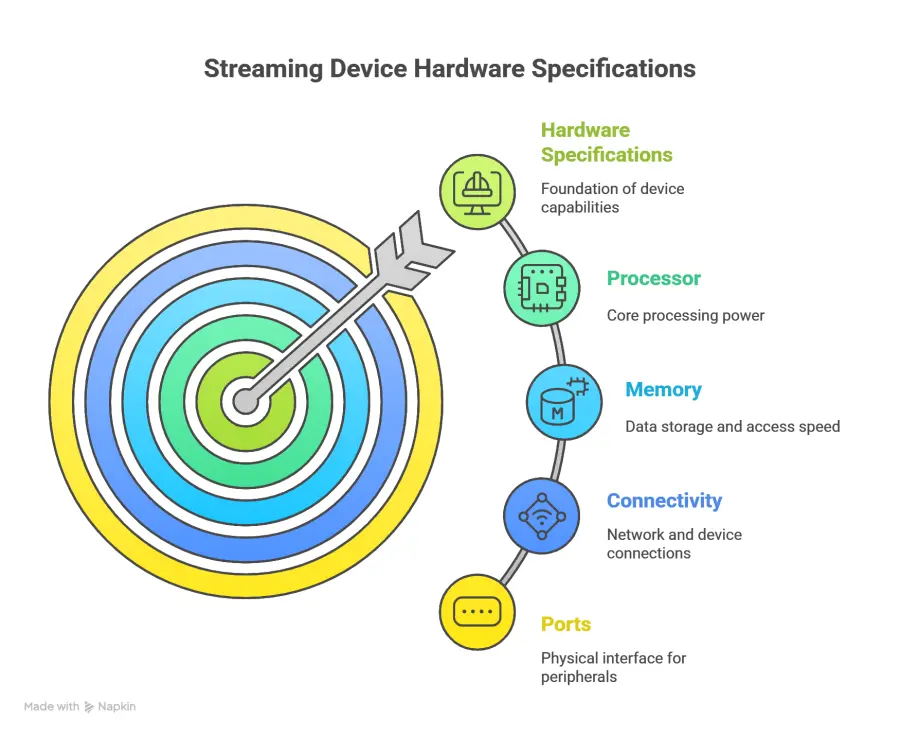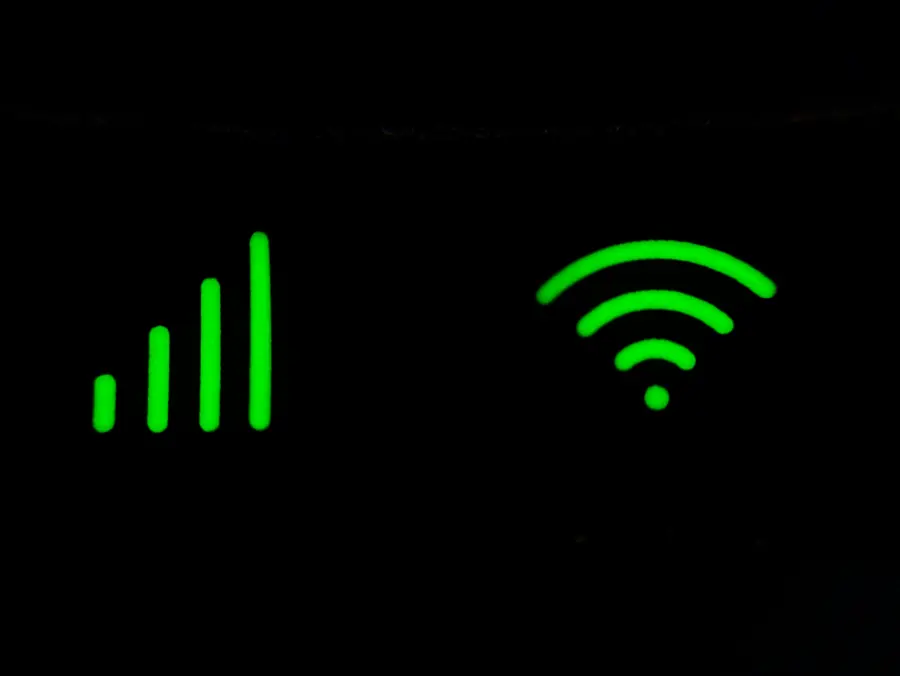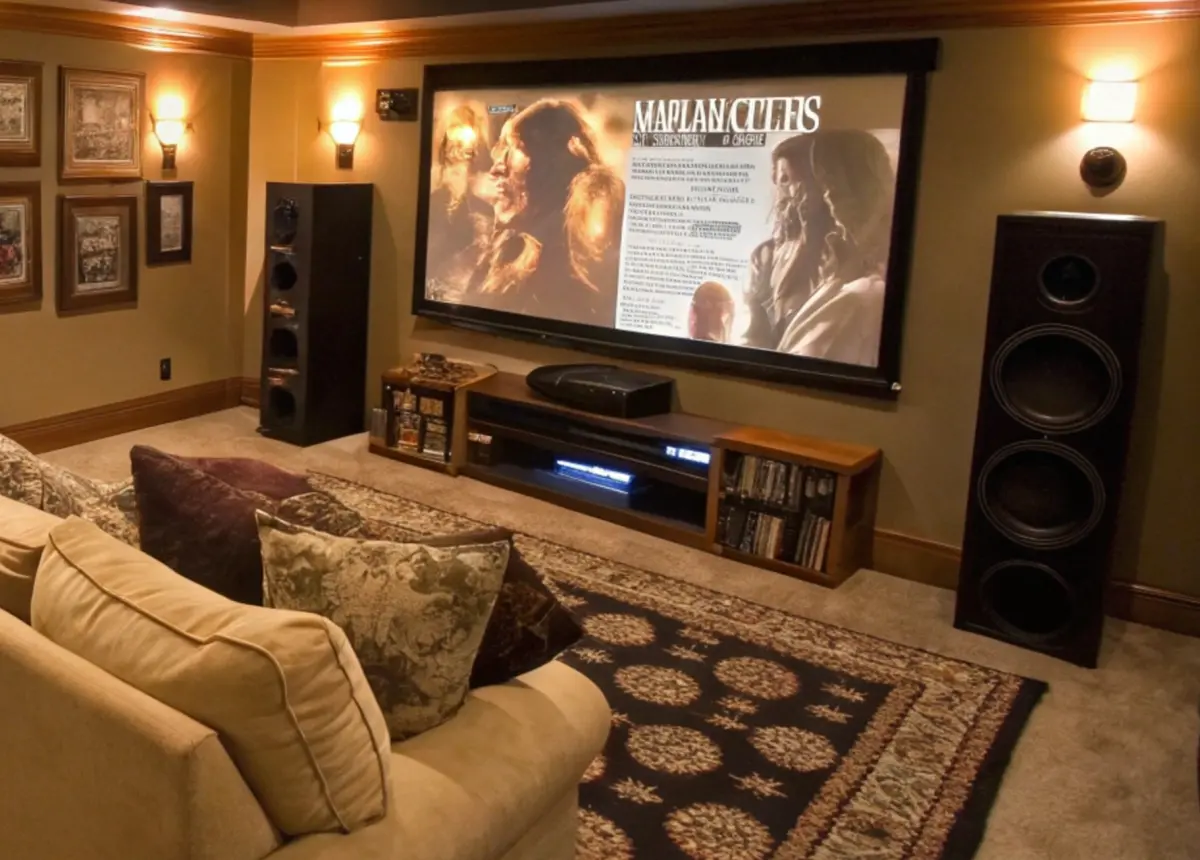How To Choose a TV Box: Performance, Storage, Interfaces, Speed, and Control

Streaming boxes, or TV boxes, can play a variety of roles spanning from entertainment to productivity, almost undoubtedly being the economic and affordable way to upgrade old-fashioned televisions. Here I will list a series of suggestions for choosing suitable boxes.
Five Must-Check Specs for Smart Buying
Hardware specifications are the foundation of a streaming device, just like the foundation of a building. No matter how attractive and fancy the upper-layer applications developed by brand manufacturers are, they must remain limited by the hardware specifications. It is truly a headache to recognize all of the parameters, even for engineers, not to mention for consumers. Here I list five key points you must check out when considering a TV box:

CPU: The Engine of Your TV Box.
The CPU (Central Processing Unit) is the core of streaming devices, which directly determines the upper limit of performance. Considering the insensitivity of box heat dissipation, it is alright to equate the CPU model with the machine's performance. Amlogic S905X4, S905Y4, RockChip RK3566, Allwinner W2, and Allwinner H618 are popular CPU models in recent years, keeping an appropriate balance between performance and price. With these models achieving an average of 100K on the latest ANTUTU Benchmark, smooth operation is mathematically guaranteed. When consumers encounter an unfamiliar model, they can simply enter the model number into the ANTUTU search engine, and then they can get a basic understanding of it.
RAM and storage: The Dual Engines for Speed & Capacity
I write RAM and storage in parallel here due to the conventional complementary pairing of them. RAM decides the space and storage for the software when running. 2GB and 4GB RAM are common choices. Typically, RAM capacity is unchangeable and fixed unless you want to customize the PCB (printed circuit board). In most cases, the default RAM capacity is sufficient. However, it may be hard to achieve special applications such as multiplayer games and non-standard and exclusive applications. Besides the capacity, the generation of RAM is also important. The RAM of TV boxes is either D4 or D3; The price difference between them is nearly 10 dollars.
Storage determines how many videos and applications users can install on streaming devices. TV boxes are always used as a streaming receiver, so the storage will not be as large as that of our mobile phone. Most TV boxes adopt eMCP (embedded multi-chip package) components as storage modules, since they can save lots of space when designing the PCB layout and offer more flexibility for appearance design. 32GB and 64GB storage are the most common choices.
Remote Control: Your TV Box's Command Baton
There are three remote control modes of TV boxes—IR (infrared ray), BT(Bluetooth), and voice control. IR is the basic and most widespread mode for control, with low power consumption and longer endurance for remotes. However, infrared ray signal, whose effective range is typically 3-5 meters, is characterized by high directionality, implying that users must aim the remote directly at the TV box’s IR receiver window (usually on the front marked area).
Please imagine that while comfortably relining on the sofa with a bucket of popcorn in the left hand and watching your favorite movies, you have to aim remoter at the TV box for scale the volume, or even have to stand up and then walk near to the box if it is far from you or blocked by something. That is too inconvenient and pesky. BT control can solve this problem; You do not have to change your cozy position, since Bluetooth connection is always kept at the expense of a little bit more power consumption. Bluetooth connection has an efficient sleep strategy against which the potential interference from adjacent WIFI channels is effectively mitigated, ensuring stable data transmission while conserving battery life.
Unlike the two control modes mentioned above, voice control relies on software and literally means that you can give commands to the remote as it is intelligent. Simple commands like “search xx” and “play xx for me” are well supported, covering 90% of frequently used operations.
Interfaces: The Universal Harbor for Your Entertainment Fleet
USB, HDMI, and LAN are three essential interfaces that consumers should consider. The USB interface is always used when having a requirement to install applications or play media resources from other storage, whose specifications are usually two kinds, USB 3 and USB 2. in addition, a USB can be plugged into a gamepad controller receiver, if you want to play games on TV boxes, never forget to check the USB interfaces.
HDMI interfaces have lots of complicated and confusing specifications, HDMI 2.0, 2.0a, 2.0b, 2.1…, making it too difficult for consumers to learn. I conclude a simple rule that may help you: if you need 8K or 4K@120Hz, please choose HDMI 2.1, and if not, then HDMI 2.0.
The specification of the LAN port is directly related to the speed of the local connection, mainly having two specifications: 1000 MB and 100 Mbps. The former is not a consistently better choice for those users who may simply use set-top boxes as a streaming receiver from a telecom provider or streaming platforms through the Internet, since they do not need a LAN at all and can save money by choosing a device with a 100 Mbps LAN port.
WIFI Module: The Invisible Express Train
When selecting a set-top box, paying attention to the specification of the WIFI module is crucial for ensuring optimal performance. Firstly, you should check what WIFI standard a device can support. WIFI 6 offers faster speeds, better connectivity, and improved efficiency compared to older standards like WIFI 5. A dual-band Wi-Fi module (2.4GHz and 5GHz) is usually best; 2.4GHz offers better range and wall penetration, while 5GHz provides faster speeds and less congestion.

Related
View all
How to Choose a TV Box: From Airbnb Hosts to Hardcore Gamers (Select the Most Suitable One According to Different Scenarios)

How to Setup a Home Theater System Using a TV Box–Complete 2024 Guide
